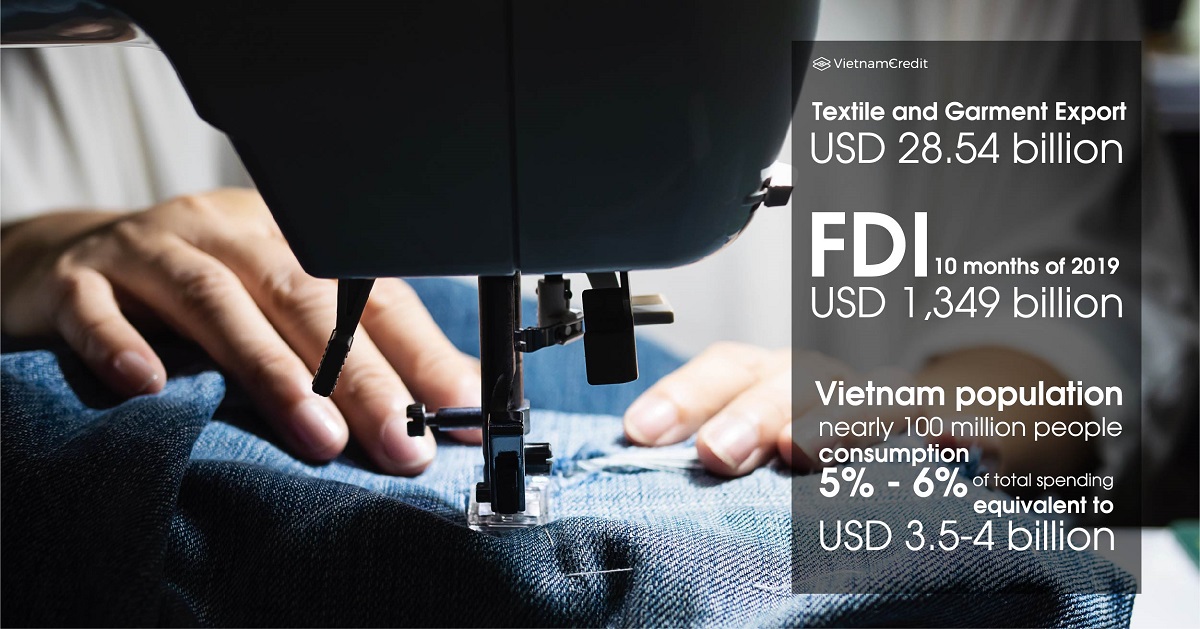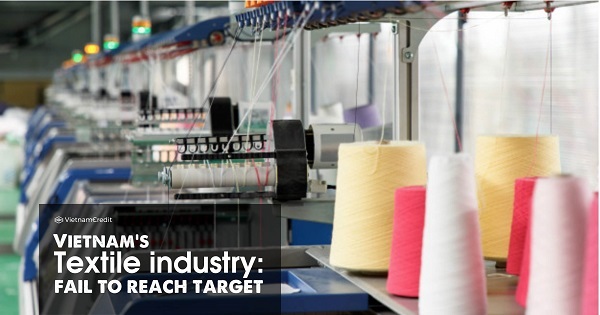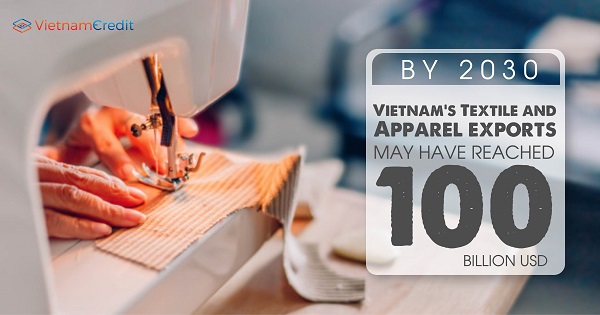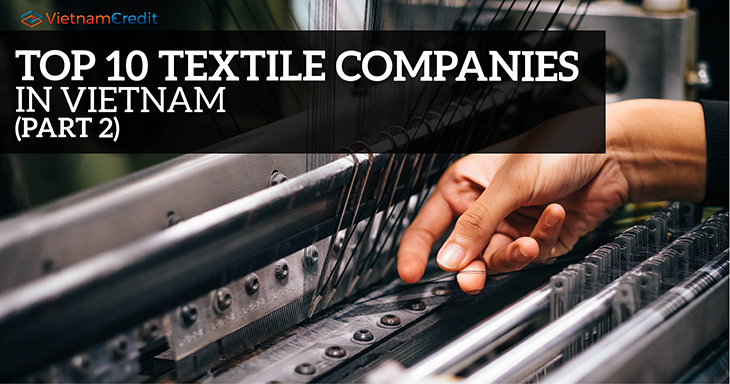Expecting the advantages from free trade agreements (FTAs), Vietnam's textile and garment industry has set the goal of raising export turnover to USD 40 billion by the end of this year. However, only two thirds of the target have been reached when there is only one month left before 2019 ends.
Foreign Market
Statistics from the General Department of Customs show that by the end of November 15, textile and garment export turnover only reached USD 28.54 billion, much lower than the set target.
According to Mr. Nguyen Xuan Hong, Chairman of Ho Chi Minh City Association of Garment-Textile-Embroidery-Knitting, Vietnam has signed many FTAs but only 30% of the export advantages from these FTAs was taken. Particularly for textiles, the rate is much lower. This means that Vietnamese goods are still suffering from high tax rates, estimated at 5% -25% (instead of only 0% -5%) due to ineligibility for reduced tariffs under the FTAs.
The increase in export turnover in the field of textiles and clothing recently came mainly from FDI enterprises, while domestic enterprises are remaining the same as before. The reason is that the bottlenecks on production materials of the textile and apparel industry have not been resolved, although businesses have proposed many times. The outstanding preferential policies in attracting investment but the lack of sanctions in post-audits have created opportunities for FDI enterprises to fully exploit export advantages from factories located in Vietnam, while domestic enterprises are still "thirsty” for resources.
According to the Vietnam Textile and Apparel Association (Vitas), FDI in the textile and garment industry in 2018 reached USD 2,027 billion and in the first 10 months of 2019, it was USD 1,349 billion. Many large textile corporations in the world have entered Vietnam, including Texhong Group, Polytex Far Eastern, Long Thai Tu Fiber Co., Ltd., Kraig Biocraft Lab. Laboratory Inc (an American company specializing in manufacturing artificial spider silk yarn), etc.
However, there exists a fact that most FDI enterprises focus on producing raw materials, which is a weakness of Vietnamese textile enterprises. However, after-production raw materials in Vietnam are sold by FDI enterprises in their closed chains or sold back to their parent companies based in their home countries. Therefore, domestic textile and garment export enterprises still do not enjoy the advantages from domestic raw materials.

Domestic Market
With a population of nearly 100 million people, the consumption of textiles and garments is about 5% - 6% of total spending, equivalent to USD 3.5-4 billion, which makes Vietnam a very attractive market for foreign fashion brands.
In the context of domestic export enterprises facing the problem of raw materials, a series of foreign apparel brands have constantly increased their presence in the domestic market. Most recently, Uniqlo (Japan) has announced that it would open its first store in District 1 (HCMC) after 2 years of market research. Previously, a series of other famous fashion names such as
Zara, H&M,
Topshop ... also made headlines in Vietnam.
The competitive pressure to keep market share on domestic brands is increasingly fierce. Currently, large-scale textile enterprises including
Phong Phu,
An Phuoc,
Viet Tien,
Agtex ... has cooperated with FDI enterprises to accelerate the investment in the production of textile and garment raw materials. They also invest in domestic brand textile products to increase the domestic market share (such as Paul Downer,
DGC, Eternity GrusZ,
May10 M series, S.PEARL, HeraDG,
Forever Young, ECO ...).
However, due to limited internal resources, many textile and apparel enterprises can only develop distribution systems on the basis of e-commerce and gradually narrow the system of shops, which also greatly affects the competitiveness of domestic garment brand. According to Vitas, from now to 2035, the room for export and domestic consumption for the textile and apparel industry is very large. Export turnover is estimated at USD 200 billion and domestic market consumption is around USD 10 billion.
Therefore, to support domestic enterprises to develop sustainably, the Government needs to make adjustments in the policy to attract investment. Investment incentives need to have conditions on the supply ratio of production materials to domestic enterprises.
Policies to support medium and long-term investment, to renovate production technologies and waste treatment should be simpler in terms of administrative procedures. Particularly for the domestic market, it is necessary to tighten inspection and thoroughly handle the situation of fake and smuggled goods, contributing to improving the healthy competitive environment for enterprises.
Source: Saigon Giai Phong
























































